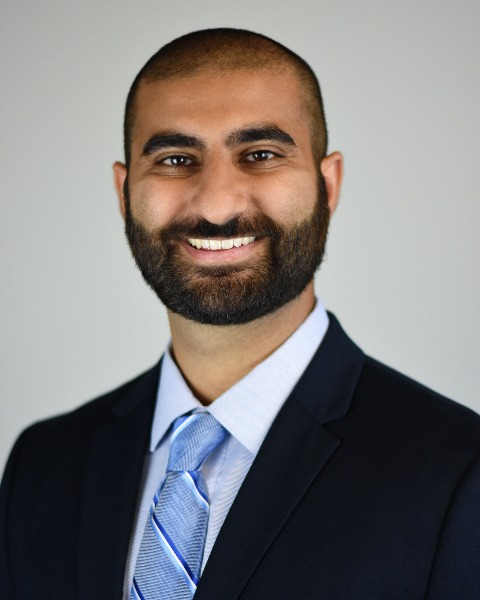Back


Poster Session B - Monday Morning
Category: Interventional Endoscopy
B0484 - Gastro-Cutaneous Fistula Closure Using Novel Tack Suture System
Monday, October 24, 2022
10:00 AM – 12:00 PM ET
Location: Crown Ballroom

Has Audio

Munraj Singh, MD
Louisiana State University Health Sciences Center
New Orleans, LA
Presenting Author(s)
Munraj Singh, MD, Catherine Hudson, MD, MPH
Louisiana State University Health Sciences Center, New Orleans, LA
Introduction: Gastro-cutaneous fistulas that develop at prior gastrostomy sites are usually successfully closed by the use of endoscopic suturing or the over-the-scope clips (OTSC). However, the endoscopic suturing device and the OTSC device measure approximately 16 mm and 14 mm, respectively, resulting in them not able to pass through narrow esophageal strictures. The endoscopic tack suture system is a novel technique that includes a through the scope suture-based device that was recently designed for the closure of large and irregular defects in the gastrointestinal tract. Even more advantageous is the ability for the tack suture system to be passed through the working channel of a standard gastroscope.
Case Description/Methods: A 61-year-old male with past medical history of head and neck cancer presented with persistent gastro-cutaneous fistula drainage following gastrostomy tube removal. On endoscopic evaluation, a benign appearing esophageal stenosis in the upper esophagus required downgrading the scope from a therapeutic scope to a gastroscope. A gastric fistula was noted in the gastric body, but the exact site of the fistula was unclear as there were 2 defects side by side (Figure 1A). Both defects were treated with APC and the entire area was closed with a single tack suture system with 4 tacks drilled in healthy tissue surrounding the defect (Figure 1B). Following tack placement, a single suture was used to cinch down and close the defect (Figure 1C). On follow up the patient had no further fistula drainage.
Discussion: Our case presents the use of a novel tack suturing system to close a persistent gastro-cutaneous fistula in the setting of an esophageal stricture. Commonly used defect closing devices such as the OTSC and endoscopic suturing device can be too large to navigate severe esophageal strictures. The endoscopic tack suture system has the ability to aid in the closure of fistulas, perforations, anastomotic leaks and submucosal dissections. While preclinical data reported no adverse events, possibilities include wound dehiscence, delayed perforation, and bleeding if the tacking system is improperly placed. Mahmoud et al. conducted the first and only multi-center study describing the feasibility and safety of the endoscopic tack suturing device in the clinical setting and found successful closure of defects in approximately 90% of cases. This novel tack suture system is a useful tool in cases that are confined to the parameters of a standard gastroscope.

Disclosures:
Munraj Singh, MD, Catherine Hudson, MD, MPH. B0484 - Gastro-Cutaneous Fistula Closure Using Novel Tack Suture System, ACG 2022 Annual Scientific Meeting Abstracts. Charlotte, NC: American College of Gastroenterology.
Louisiana State University Health Sciences Center, New Orleans, LA
Introduction: Gastro-cutaneous fistulas that develop at prior gastrostomy sites are usually successfully closed by the use of endoscopic suturing or the over-the-scope clips (OTSC). However, the endoscopic suturing device and the OTSC device measure approximately 16 mm and 14 mm, respectively, resulting in them not able to pass through narrow esophageal strictures. The endoscopic tack suture system is a novel technique that includes a through the scope suture-based device that was recently designed for the closure of large and irregular defects in the gastrointestinal tract. Even more advantageous is the ability for the tack suture system to be passed through the working channel of a standard gastroscope.
Case Description/Methods: A 61-year-old male with past medical history of head and neck cancer presented with persistent gastro-cutaneous fistula drainage following gastrostomy tube removal. On endoscopic evaluation, a benign appearing esophageal stenosis in the upper esophagus required downgrading the scope from a therapeutic scope to a gastroscope. A gastric fistula was noted in the gastric body, but the exact site of the fistula was unclear as there were 2 defects side by side (Figure 1A). Both defects were treated with APC and the entire area was closed with a single tack suture system with 4 tacks drilled in healthy tissue surrounding the defect (Figure 1B). Following tack placement, a single suture was used to cinch down and close the defect (Figure 1C). On follow up the patient had no further fistula drainage.
Discussion: Our case presents the use of a novel tack suturing system to close a persistent gastro-cutaneous fistula in the setting of an esophageal stricture. Commonly used defect closing devices such as the OTSC and endoscopic suturing device can be too large to navigate severe esophageal strictures. The endoscopic tack suture system has the ability to aid in the closure of fistulas, perforations, anastomotic leaks and submucosal dissections. While preclinical data reported no adverse events, possibilities include wound dehiscence, delayed perforation, and bleeding if the tacking system is improperly placed. Mahmoud et al. conducted the first and only multi-center study describing the feasibility and safety of the endoscopic tack suturing device in the clinical setting and found successful closure of defects in approximately 90% of cases. This novel tack suture system is a useful tool in cases that are confined to the parameters of a standard gastroscope.

Figure: Figure 1A: Gastric fistula. Figure 1B: Fistula following APC with 4 tacks drilled in healthy tissue surrounding the defect. Figure 1C. Cinching of single suture with closure of gastric fistula
Disclosures:
Munraj Singh indicated no relevant financial relationships.
Catherine Hudson indicated no relevant financial relationships.
Munraj Singh, MD, Catherine Hudson, MD, MPH. B0484 - Gastro-Cutaneous Fistula Closure Using Novel Tack Suture System, ACG 2022 Annual Scientific Meeting Abstracts. Charlotte, NC: American College of Gastroenterology.
